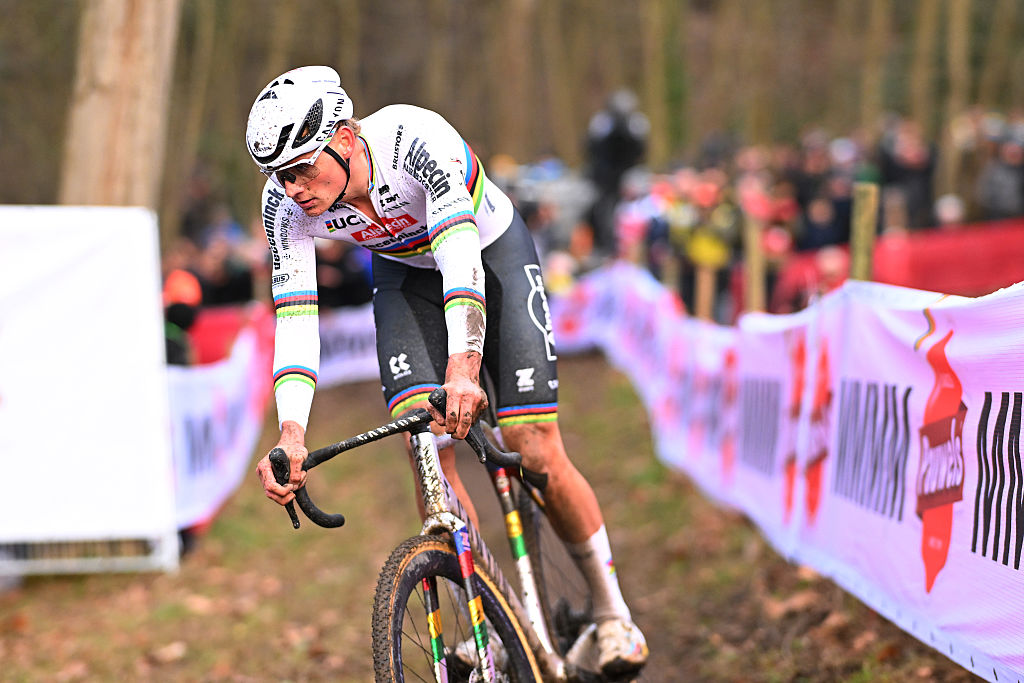Predictive nutrition and mathematic modelling - How AI is changing the WorldTour peloton
How much has machine learning infiltrated the professional peloton and where does its future lie? Cyclingnews investigates…
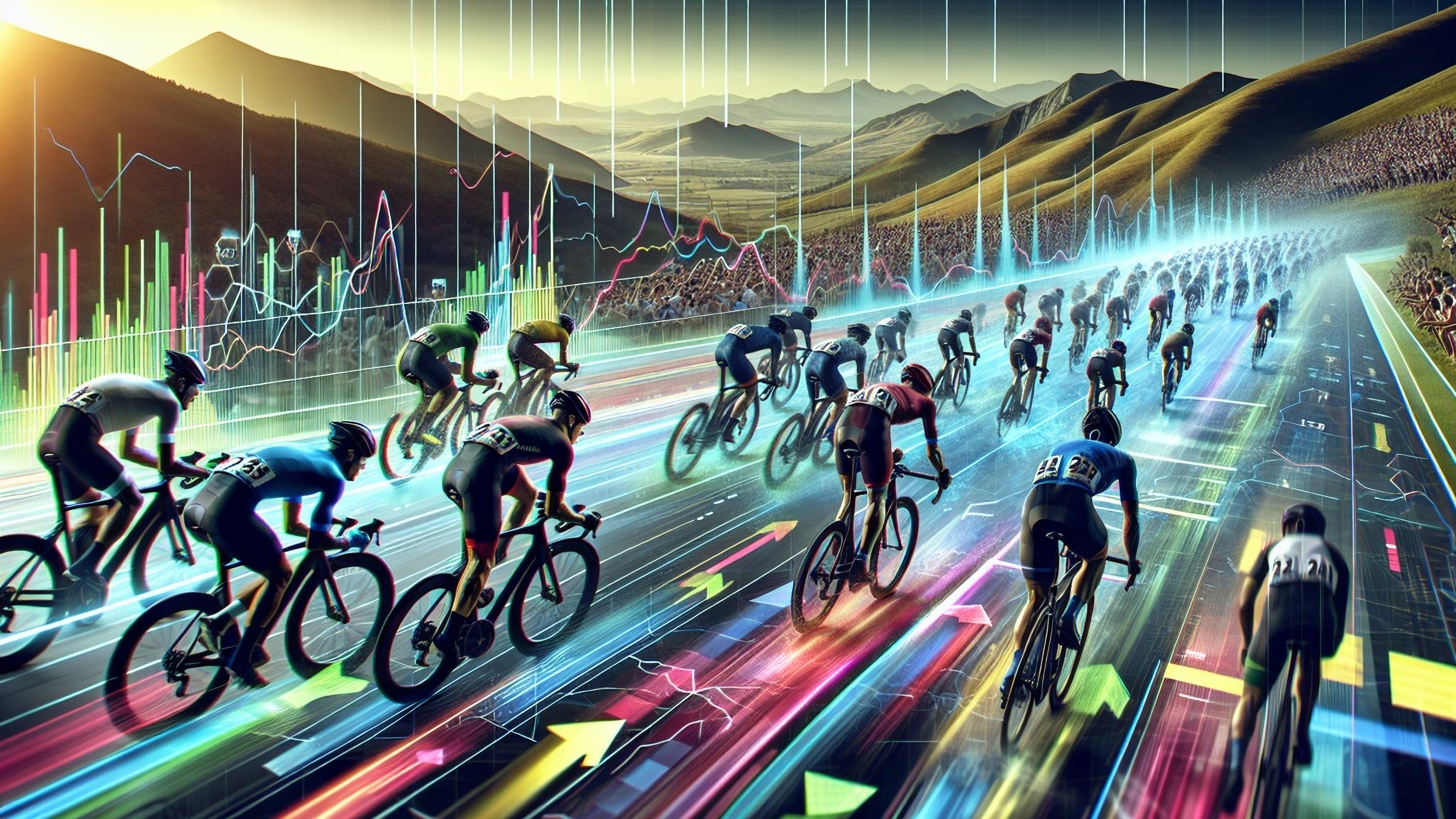
“It’s something we’re looking into and has great potential, but that’s as far as it goes at the minute.”
“It’s something we’re looking into and has great potential, but we can’t reveal more.”
No reply. The three rules of Artificial Intelligence (AI) Club when Cyclingnews asked professional teams for their feedback on what seemingly every industry sees as a game-changing technology. Professional cycling, swarming with data points for every possible metric, would seem a prime candidate for AI intervention. But secrecy and competitive advantage ruled. Until we came across a Belgian company called Brailsports, which seems to be in collaboration with ProTeam Lotto Dstny. So, we contacted Brailsports and lo and behold, the artificial shutters weren’t up. “We’d be delighted to talk,” communication specialist Pieter Van Nuffel told us. Excellent. Time to see how cycling training, nutrition and technology will change – and are changing – through the use of AI…
Inspired by Team Sky
First things first, an introduction. “We’re named after Sir Dave Brailsford,” says Steven Latré, head of AI at Imec. Brailsports is a spin-off of Imec, a world-leading nanoelectronics R&D hub whose headquarters are in Leuven. They’re a non-profit organisation and have 5,500 researchers worldwide. “Our founders were on a gravel ride and came up with the name as he’s the man who brought science to cycling.
“The AI and cycling idea arose around four years ago,” Latré adds. “Researchers then worked on the project before we collaborated with Lotto Dstny on the first version of the platform last year. They’ve increasingly used our dashboard, with this year’s Tour de France the highlight of our link-up so far.”
More precisely, the 18th stage where Victor Campenaerts racked up his first Tour de France stage victory. It’s been widely reported that the Belgian spent nine weeks at altitude in the build-up to the Tour, unusual for a rider seeking stage success. It’s less well-known that Campenaerts turned AI potential into a victorious reality.
“A few days before that stage, the dashboard was signalling a high level of fatigue and stress,” says Latré. “The team took that on board and collectively made the decision to instruct Victor to ease off. It gives you a daily view of every rider that’s truly personalised.”
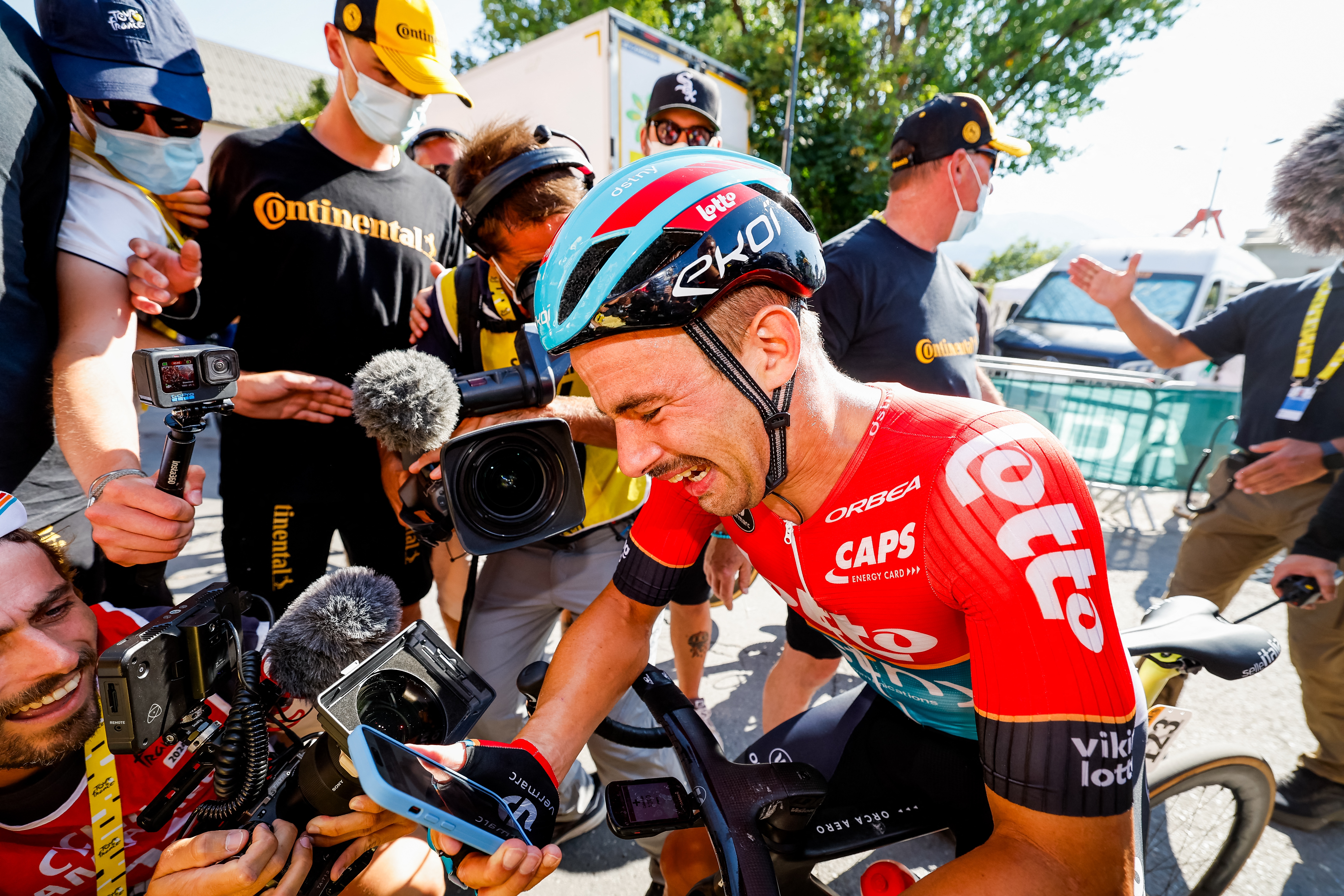
Which sceptics might say is similar to the likes of leading power software Training Peaks? “First off, we do integrate with Training Peaks and import all the data,” says Latré. “But how is the training score calculated? In essence, an academic years ago had athletes tested in a controlled environment and made a mathematical model out of their findings, deciding that’s how fitness and fatigue work. And there’s certainly value in that.
“But at Brailsports, you’ll receive values of fitness and fatigue that are more unique to you. Our AI model gives you a real insight into the training impulses of the individual, helping to see if you’re edging toward overtraining or on the verge of a performance breakthrough. It’s all about optimising a huge amount of training data of that particular rider.”
The Brailsports dashboard sucks in swathes of metrics that are then simply presented to both rider and coach. As a snapshot, you have lactate-threshold predictions that could lead to a change in training load; daily wellness metrics like heart rate variability to measure stress; and a fatigue-to-fitness ratio score.
It might not sound seismic but remember, it’s this more specific assessment of training and potential physiological and performance adaptation that’s seen power meters become omnipresent in the professional arena. If AI can make these training and race decisions even more precise, and more accurate, in theory, there’ll be a greater chance of reducing illness and delivering peak performance.
Sign up to the Musette - our subscriber-only newsletter
The Workout Wizard
Of course, AI is only as good as whoever has worked on the machine-learning models in the first place. To that end, Brailsports has worked with experts at Ghent and Antwerp universities, while its co-founders are professors in exercise physiology and cycle coaching. They stress it’s not just a team of software developers. As does Paul Laursen of the AI coaching platform Athletica.
Laursen is a highly decorated sports scientist and coach of more than 30 years. He was the former lead performance physiologist for High-Performance Sport New Zealand during the London and Rio Olympic cycles and has had over 140 papers published. Athletica AI was born in 2020 and now features a team of data and sports scientists, plus a high-profile investor and tester, Alistair Brownlee, who won Olympic gold in triathlon at London and Rio.
Laursen is currently working with a professional cycling team, but he remains guarded about who. It doesn’t take long to drop the guard, a quick search on the Athletica website reveals its ProTeam VF Group-Bardiani CSF-Faizanè. The site includes an analysis of 20-year-old Giulio Pellizzari’s attempt to win the 16th stage of this year’s Giro d’Italia. You can dig into the detail here but, suffice it to say, he was passed by Tadej Pogačar with 700m to go, though held on for second.
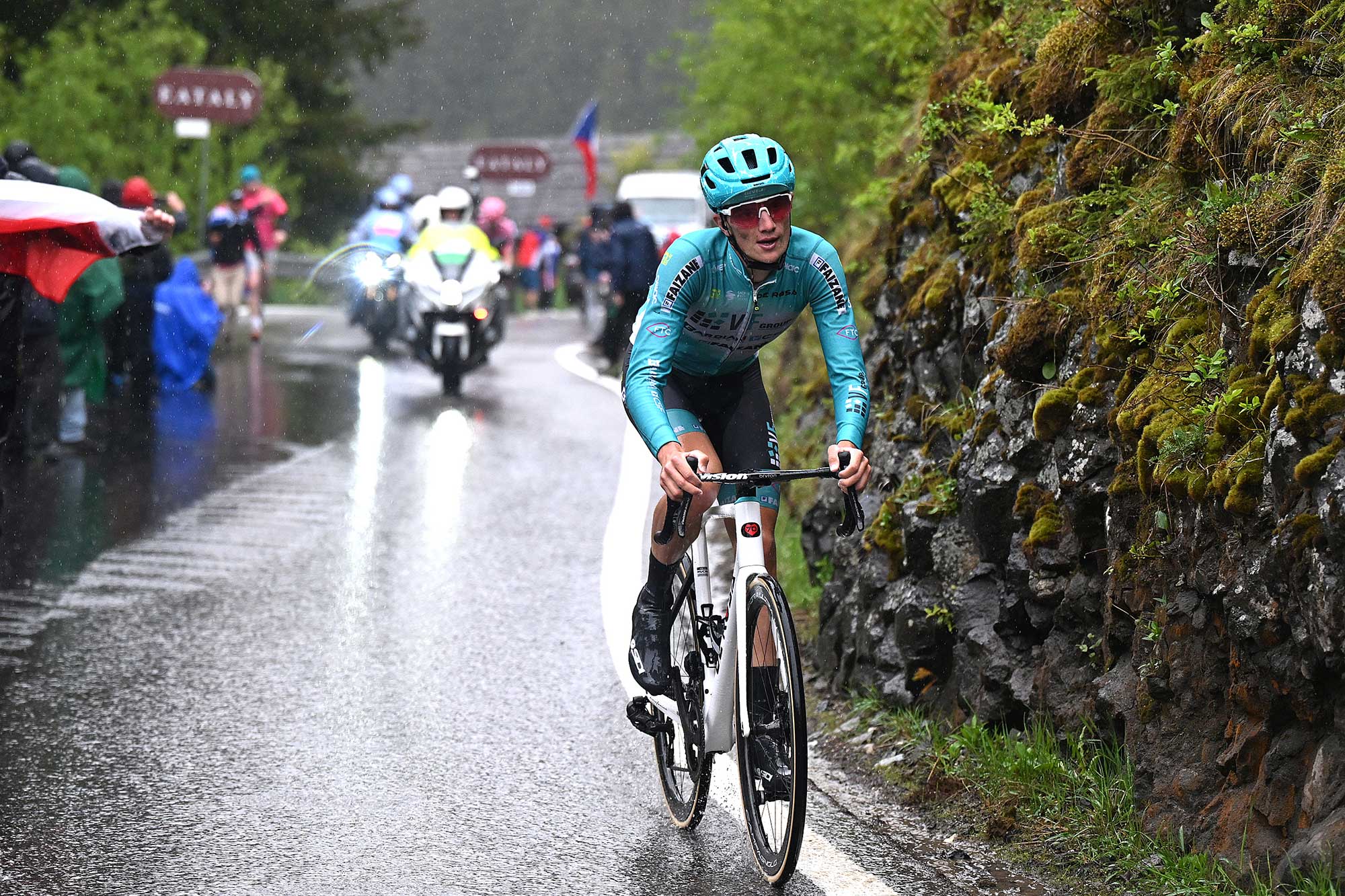
A standout metric is their novel method of quantifying a session, named Workout Reserve. Similar to Brailsports, it hoovers up swathes of training and race data, in this case, to give an insight into how much gas remains in the tank relative to what riders have achieved in the past. This, says Laursen, works in tandem with their Workout Wizard.
Now, this is the bit that really could pique a rider’s interest, especially a recreational rider as Athletica is available to amateur athletes, using data from Garmin or Strava.
“A rider might follow a training plan, but they might seek variety,” says Laursen. “That’s where the Wizard comes in. It’ll change your session, but still hit the same physiological targets and training loads as the original option based on your last six weeks of training. That ensures you’ll never burn too many matches. These are things that would make a coach’s brain hurt but the Athletica AI can do that in seconds.”
Fuelling precision
So, AI has the potential to make wasted training miles a thing of the past. It’s the same with calories. Visma-Lease a Bike has been at the forefront of fuelling technology for years, thanks ostensibly to having a software company (Visma) as a co-sponsor since 2019 and a supermarket chain (Jumbo) as a co-sponsor between 2015 and 2023. The result was the Nutrition Prediction Model.
Many months in advance of the Tour de France, the nutrition team would analyse the route and make a series of nutritional predictions for each stage based on who’s going to ride the Tour and a rider’s physiology. For each stage and the potential role and goal of each rider, the team then predicted their power output and intensity of effort, and so could predict energy expenditure and carbohydrate use. With the advent of AI, which also accounts for weather conditions, Visma suggests the accuracy of nutrition predictions from 52% to 82%.
Then there’s Hexis, a piece of software that matches nutritional needs to training output, helping riders to periodise fuelling on a daily basis. They’re currently working with a number of WorldTour teams and riders including Bob Jungels.
“We’re not technically AI; we’re more an intelligent machine that follows certain rules,” says Dr Sam Impey, Hexis co-founder and former lead nutritionist at British Cycling. “It’s trained to make decisions I’d make but on a much larger scale.”
Cyclingnews has played around with the system and it’s a usable app that utilises a traffic-light system to inform whether you’re under-fuelled, over-fuelled or spot on. It reveals the macronutrient breakdown of everything you eat to guide carbohydrate, protein and fat intake. If you’re a TrainingPeaks user, you can link the two apps, Hexis integrating this kilojoules-burnt information into your daily nutritional equation.
Impey says it’s particularly useful at the WorldTour level where you might have one rider competing at the Tour while another’s on an altitude camp. “Historically, those riders training at altitude probably wouldn’t enjoy any support from the nutritionist because they’re focusing on the Tour riders. With a technology like Hexis, they can take the guesswork out of what they’re doing.” In a weight-based sport, the performance benefits are clear.
Uno-X also utilise food technology and realise the benefits of AI. “One of the limitations on the nutrition side is that it’s static information,” says James Moran, the team’s nutritionist. “That’s not perfect as we can all see the increase in speed over the [past] few years. The next step would be to incorporate AI to calculate race speeds going forward, which would affect energy expenditure, which we could then use to formulate an even more specific nutrition plan for each rider.”
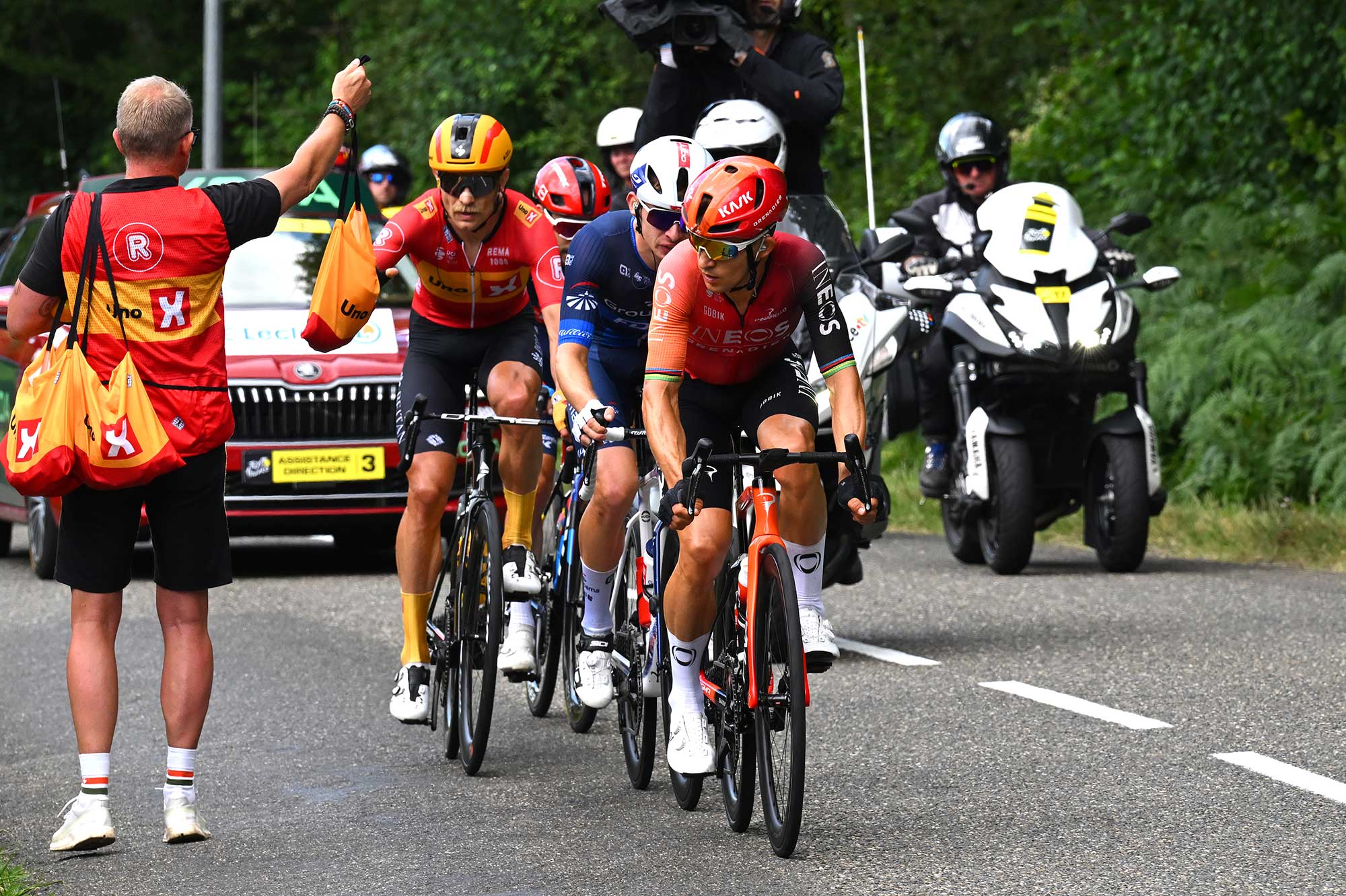
Arguably, think of what goes into making an elite rider and team and AI has the potential to refine. Choosing the best eight riders for the Tour, pinpointing a rider’s exact hydration needs in the heat, the perfect drag-reducing gear and clothing set-up depending on course profile… We know WADA (World Anti-Doping Agency) is funding research into AI and doping.
“And you can certainly see AI being used to optimise certain materials and shaping for greater aerodynamics,” Latré says. “Also, I know there’s current work looking at AI models to detect certain safety issues along a parcours. There are often crashes in the peloton. Of course, sometimes it’s down to the behaviour of the cyclists, but sometimes it’s down to the design of the route. You’ll be able to pinpoint the potentially dangerous sections with AI.
“Rider recruitment will benefit, too, especially for talent identification. You’ll be able to compare the performances more accurately of a rider repeating the same hill in Colombia compared to a rider in the UK, even if the hills are completely different profiles.”
Potential downsides
The result? Ever-greater race speeds? Possibly. The recently retired Luke Rowe, who’s moving to Decathlon AG2r La Mondiale as DS on January 1, 2025, says that he had concerns about the pressure being applied on younger riders through over-reliance on data. “I’m more old school,” he says. “You took racing seriously but still had fun. You’d go on a chain gang to beast yourself – and the competition – not to hit certain numbers.”
It was a sentiment recently echoed by former Olympic cyclist and Eurosport pundit Brian Smith on X when commenting about Steve Cummings leaving Ineos Grenadiers. “The mental state of a rider is now being left at the side of the road because of the numbers game,” he wrote. “Altitude, haemoglobin testing… scientists seem to be the way forward. There is no fun in cycling teams anymore. Science has killed this. Robotic riders and robotic sports directors. Gone are the GRINTA days. Riders now know what they can achieve, what they are up against and turn up at races in a poor mental health state.”
Latré, too, who has a vested interest in AI succeeding, is pragmatic about its use. “AI has the potential to unlock marginal gains but it’s no silver bullet,” he says. “The professionals will still need coaches and sports scientists to work with. It’s one piece of the puzzle, not the whole part. The coaches also need to be aware of messaging. If a rider’s data is low, it might get in the rider’s head and performing badly will be a self-fulfilling prophecy.” In other words, the coach needs to calm and reassure the rider if they have occasional low days but, as they would now, act on trends.
All in all, AI’s ability to analyse tremendous amounts of data at breakneck speeds could be transformative when it comes to the speed of the peloton. Aerodynamics that are fully dialled in, the perfect race weight, tapered to perfection… the next-generation Pogačar could be even faster. But as Rowe and Smith caveat, what will be the psychological cost of even more metrics to analyse and process? If a rider really does become a robot, it might equal more speed but more fun? Doubtful. We’ll finish with another AI trend of 2024: time will tell…
If you subscribe to Cyclingnews, you should sign up for our new subscriber-only newsletter. From exclusive interviews and tech galleries to race analysis and in-depth features, the Musette means you'll never miss out on member-exclusive content. Sign up now
